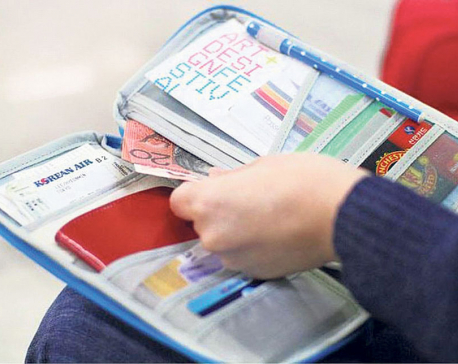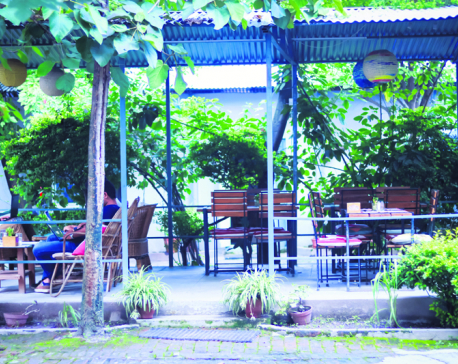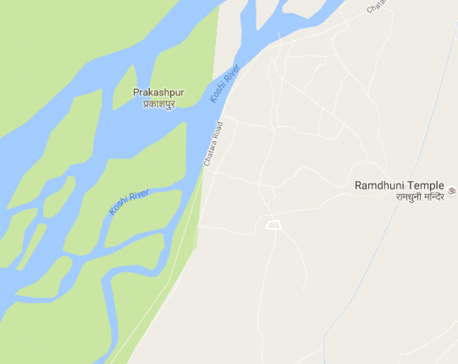
OR
Highway accidents
An air crash, anywhere in Nepal, is big news, for the sheer spectacle of it. There are few things that garner people’s attention more than an air-crash site: the pulverized main body that has been ploughed into the ground, debris everywhere; the mystery of what went wrong up there, the search for the enigmatic black box down here. The few human casualties, as a result, are deeply mourned, and the personal details of the deceased instantly enter public consciousness. Compare that with accidents in our highways, which are far more common and far more deadly, but also far less visible. These accidents have become so common that people have started to ignore the ones where only five or ten people die. To focus their attention, something bigger is needed. Take Tuesday’s horrific bus accident in Dhading district when 19 people were killed and 15 others critically injured. The twisted green frame of the overturned bus, which has been completely wrecked, does not make for a pretty sight at Dhading’s Kimtang VDC. Only a day before, on Sunday, the jeep carrying former Home Minister Madhav Prasad Ghimire veered off the road and plunged into the raging Trishuli below at Ghoptebhir of Chitwan. As of this writing, Ghimire remains unaccounted for.
If Nepali skies are unsafe, Nepali highways are deadly. In just two months of the current fiscal year, 2,832 road accidents have been recorded across the country, involving 340 fatalities and severe injuries to 647, according to Nepal Police. The government’s conclusion that 60 percent of all road accidents are caused by the negligence of the drivers suggests that it is possible to cut down on their number if public vehicle drivers are better trained and, when they break road rules, summarily punished. Since drivers already know a lot about safe driving in the process of applying for their driving license, the focus of any initiative to cut down on road accidents has to be punishing the errant drivers.
There must be hardly a public bus or microbus driver who does not break the speed limits of our treacherous highways. There are also very few long-distance public vehicles that refuse to take in passengers even though they are already jam-packed. But, then, seldom are these drivers punished for dangerous driving or overcapacity. But this can happen only if the drivers of these vehicles are given a leeway by traffic and highway police, perhaps in return for a small bribe.
The police force is reportedly coming up with a new strategy to minimize road accidents during the upcoming festive season, Dashain especially, when hundreds of thousands of people will travel to and fro form their ancestral homes. There will apparently be more checks and public buses will not be allowed to keep passengers up in their roofs. We can only hope that they are committed to their words. But that won’t be enough. Still big stretches of our highways are badly damaged due from the recent monsoon. These sections should be urgently repaired. More than that, it is also the duty of the passengers to demand that they be taken to their destinations safely. Without this, strict policing alone will have limited impact. We believe it is possible to make our highways safer through such collective efforts.
You May Like This

Staying safe: The eight basic rules of staying safe while traveling
Few things are more exciting than traveling internationally. When going abroad, you get to experience all the beautiful cultures that... Read More...

Work Together, Grow Together
The number of start-ups and entrepreneurs has mushroomed in the Kathmandu Valley in recent years. Regardless of how unrealistic and... Read More...

37 rescued safe from Koshi River boat capsize (updated)
SUNSARI, Sept 17: Thirty seven people were rescued while some are feared still missing as the boat capsized in the Koshi River... Read More...
Just In
- KMC to organize a month-long skill fair from May 1
- Birgunj Metropolis collects over Rs 360 million in revenue
- NEPSE plunges below 2,000 points after one and a half months; daily turnover declines to Rs 2.10 billion
- AI Index Report-2024: AI still behind humans on complex tasks like competition-level mathematics
- Daiji-Jogbudha road construction at snail’s pace
- Govt fails to adopt podway technology despite its potential in Nepal
- Jhulaghat border crossing in Baitadi to remain closed from this evening
- Universities will be free from partisan interests: Education Minister


















Leave A Comment